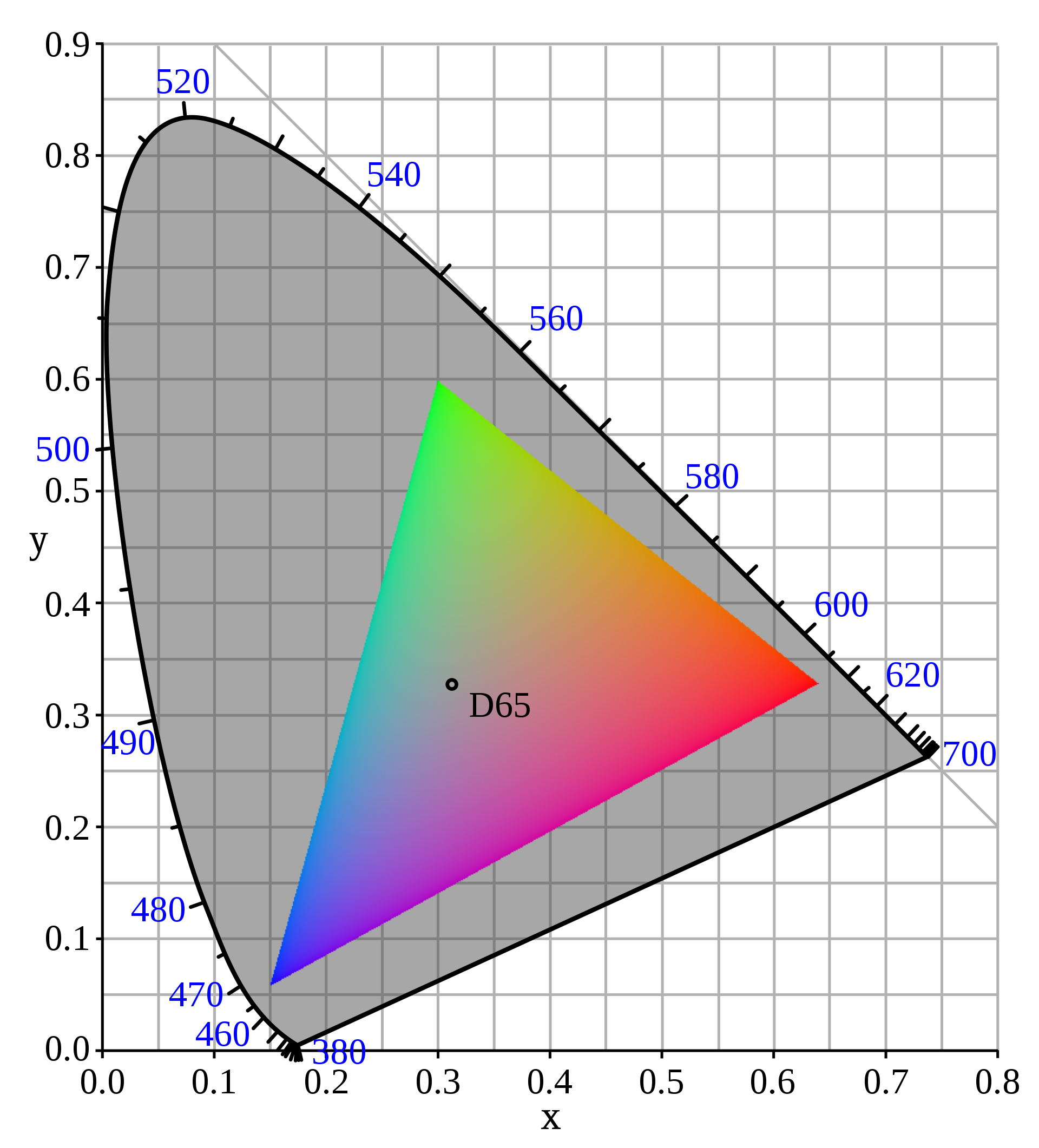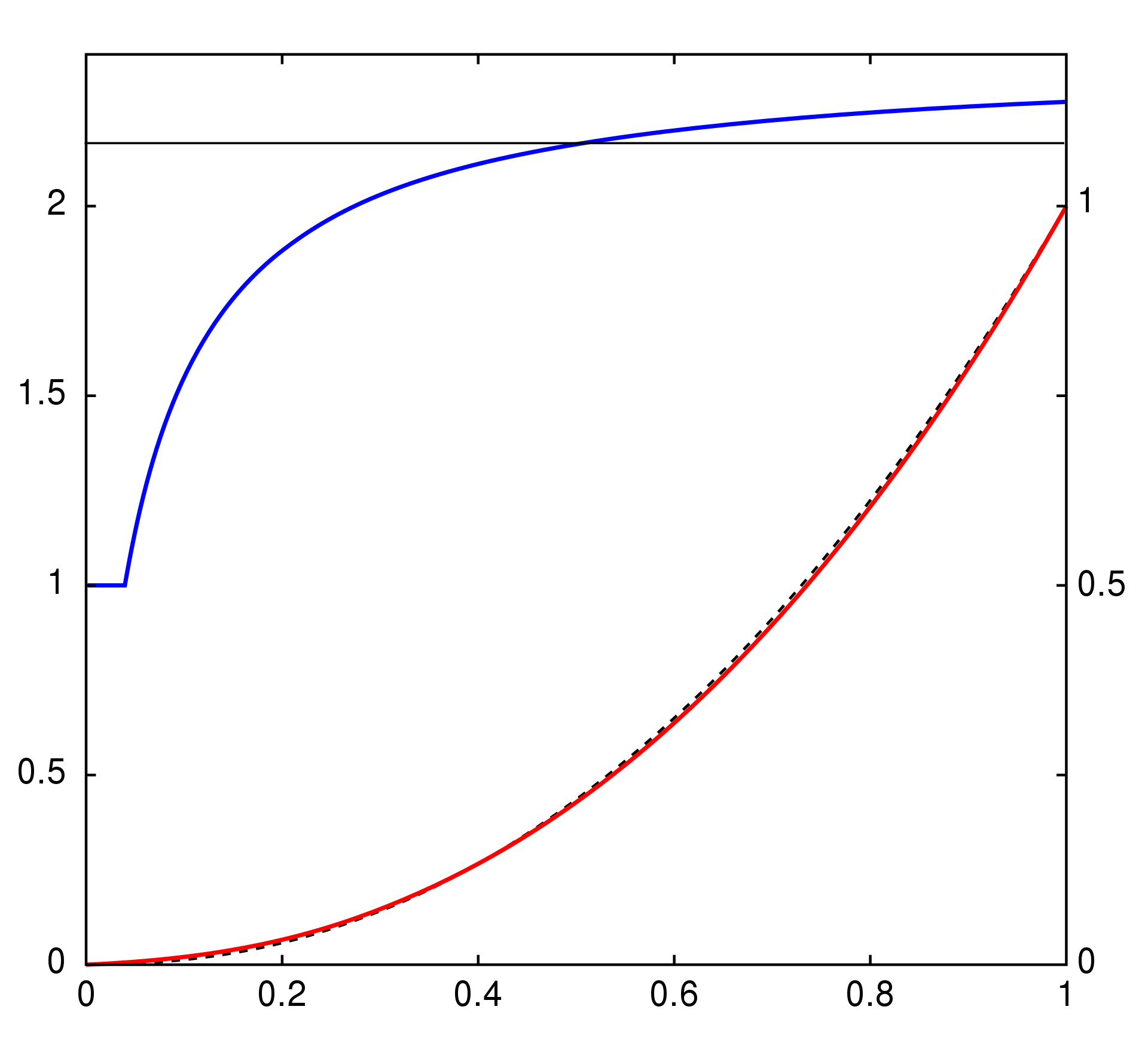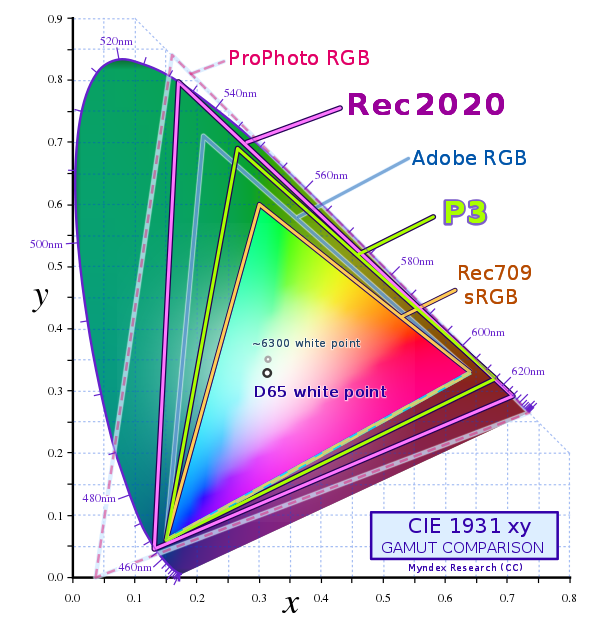sRGB
IEC 61966-2-1 Default RGB Colour Space - sRGB
Description
sRGB colors situated at calculated position in CIE 1931 chromaticity diagram. Luminance Y set so that R+G+B=1 to avoid bright lines toward primaries' complementary colours.
sRGB is a standard RGB (red, green, blue) color space that HP and Microsoft created cooperatively in 1996 to use on monitors, printers, and the World Wide Web. It was subsequently standardized by the International Electrotechnical Commission (IEC) as IEC 61966-2-1:1999. sRGB is the current defined standard colorspace for the web, and it is usually the assumed colorspace for images that are neither tagged for a colorspace nor have an embedded color profile.
sRGB essentially codifies the display specifications for the computer monitors in use at that time, which greatly aided its acceptance. sRGB uses the same color primaries and white point as ITU-R BT.709 standard for HDTV, a transfer function (or gamma) compatible with the era's CRT displays, and a viewing environment designed to match typical home and office viewing conditions.
An amendment of the IEC 61966-2-1 standard document that defines sRGB includes the definition of a number of variants including sYCC, which is a Y′Cb′Cr′ luma-chroma-chroma color representation of sRGB colors with an extended range of values in the RGB domain (supporting negative values in the RGB domain).
Plot of the sRGB intensities (red), and this function's slope in log-log space (blue), which is the instantaneous gamma. Below a compressed value of 0.04045 or a linear intensity of 0.00313, the curve is linear so the gamma is 1. Behind the red curve is a dashed black curve showing an exact gamma = 2.2 power law.
The IEC specification indicates a reference display with a nominal gamma of 2.2, intended to be similar to the gamma response of CRT displays. The ability to directly display sRGB images on a CRT without any lookup greatly helped sRGB's adoption. Gamma also conveniently places more numbers near the black, reducing visible quantization artifacts.
The standard further defines a nonlinear electro-optical transfer function (EOTF), which exactly defines the relationship between the output intensity of the primaries and the image data as stored. This curve is a slight tweaking of the simple Gamma 2.2 function.[5] A linear section is near zero, in order to avoid an infinite or zero slope that a gamma curve has. This is spliced to a curved section designed so the overall function is very close to a gamma 2.2 function. In order to do this a formula using a higher exponent (2.4 in this case) is necessary. The instantaneous gamma (the slope when plotted on a log:log scale) varies from 1 in the linear section to 2.4 at maximum intensity, with a median value being close to 2.2.
In practice a pure gamma curve may be used with sRGB data with very little difference, this is referred to as "simple sRGB" by Adobe, and also what happens when it is displayed unchanged on a CRT.
Comparison of some RGB and CMYK colour gamuts on a CIE 1931 xy chromaticity diagram


